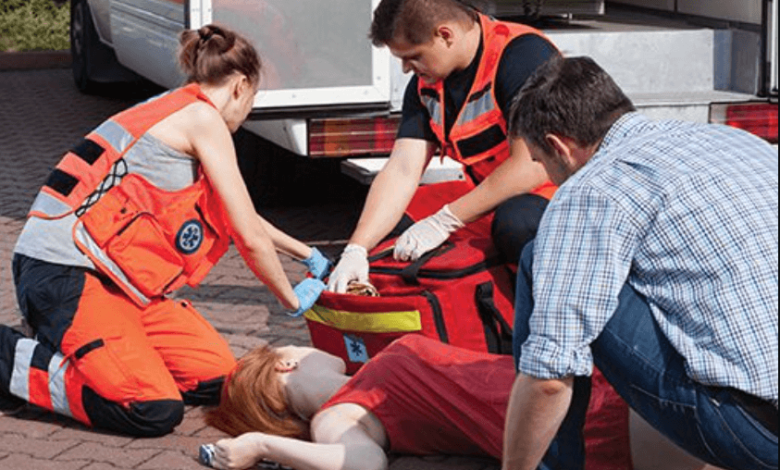How to Effectively Call Ambulance in Emergencies

Introduction to Calling Ambulance Services
In critical health situations, knowing how to call ambulance services can save lives. Quick and precise action ensures that patients receive timely medical attention and transportation to healthcare facilities. Whether it is a heart attack, accident, or sudden illness, understanding the process of calling ambulance services is essential for everyone.
When to Call Ambulance
There are specific situations where it is crucial to call ambulance immediately. These include severe injuries, unconsciousness, difficulty breathing, chest pain, strokes, severe bleeding, or any life-threatening condition. Promptly contacting emergency medical services reduces the risk of complications and improves survival chances.
Steps to Call Ambulance Efficiently
Calling ambulance efficiently involves several important steps. First, remain calm and assess the situation to provide accurate information. Dial the local emergency number, state your location clearly, and describe the patient’s condition. Mention any critical symptoms and the number of people needing assistance. Providing this information helps dispatchers send the right type of ambulance and medical team.
Information to Provide When Calling Ambulance
When you call ambulance, certain details are essential for a fast response. Share your exact location, nearby landmarks, and contact number. Describe the patient’s age, gender, and medical history if known. Explain the type of emergency, such as trauma, cardiac arrest, or respiratory issues, so paramedics can prepare necessary equipment in advance.
See also: Enhancing Pond Health with Evolution Aqua Air Pumps
Role of Emergency Dispatchers
Emergency dispatchers play a crucial role when you call ambulance. They guide callers through initial first aid steps, provide reassurance, and ensure that the nearest ambulance is dispatched quickly. Effective communication with dispatchers significantly improves the efficiency of emergency response.
Types of Ambulance Services Available
Different types of ambulances are available depending on the severity of the condition. Basic life support ambulances handle standard emergencies, while advanced life support ambulances are equipped for critical patients requiring intensive care. Specialized ambulances are available for pediatric, neonatal, or trauma cases, ensuring appropriate care during transit.
Response Time and Its Significance
Response time is a critical factor in emergency medical services. The faster the ambulance arrives, the higher the chances of patient survival and recovery. Urban areas often have shorter response times due to proximity, while rural areas may require strategic planning and coordination to reduce delays.
Preparing for the Arrival of Ambulance
While waiting for ambulance arrival, it is important to keep the patient safe and stable. Move them to a secure location if necessary, monitor vital signs, and follow dispatcher instructions. Avoid giving food or water if the patient is unconscious or seriously injured. Preparing the area for easy access helps paramedics reach the patient quickly.
Equipment Used in Ambulances
When you call ambulance, the vehicle usually comes equipped with essential medical tools. This includes oxygen cylinders, defibrillators, stretchers, first aid kits, and medications. Advanced ambulances may have ventilators, ECG monitors, and telemedicine systems for real-time communication with hospital doctors.
Training of Paramedics
Paramedics are highly trained professionals who provide life-saving care when you call ambulance. They are skilled in trauma care, cardiac emergencies, respiratory support, and patient stabilization. Their expertise ensures that patients receive professional care during transport to hospitals.
Common Challenges in Emergency Response
Despite efficient systems, challenges such as traffic congestion, unclear locations, and high demand can delay ambulance arrival. Being precise and calm when you call ambulance mitigates these challenges. Public awareness campaigns and infrastructure improvements are also crucial to enhancing emergency medical services.
Importance of Accessibility and Awareness
Everyone should know how to call ambulance and understand emergency procedures. Public education programs, mobile apps, and clear signage of emergency numbers contribute to faster access to medical care. Widespread awareness ensures that timely help reaches people in urgent need.
Benefits of Using Professional Ambulance Services
Calling ambulance professional services provides immediate medical intervention, safe patient transport, and continuous monitoring during transit. Families and caregivers receive guidance and reassurance from trained paramedics, reducing stress during emergencies.
Conclusion
Knowing how to call ambulance and understanding the process is essential for saving lives. Quick action, clear communication, and cooperation with emergency personnel enhance response effectiveness. Continuous public awareness, professional training, and technological advancements strengthen ambulance services, ensuring timely medical care for all in critical situations.




